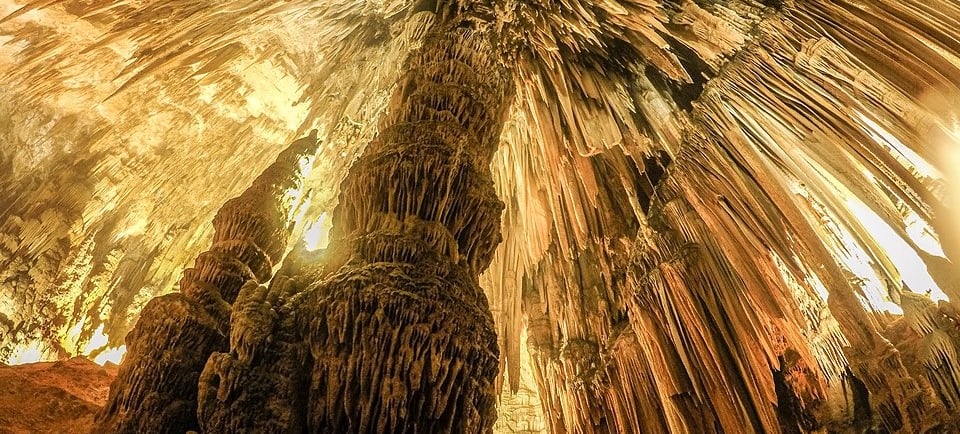Devil's Cave: Brazil's Accessible and Fascinating Ecotourism Gem in São Paulo
Devil's Cave: Brazil's Accessible and Fascinating Ecotourism Gem in São Paulo. The Caverna do Diabo State Park, located in Eldorado, São Paulo state, is one of Brazil's most fascinating ecotourism destinations. It's renowned for its namesake cave, which is one of the largest and most impressive in the state.
TRAVEL
Unveiled Brazil
10/5/20254 min read


Discover Caverna do Diabo (Devil's Cave): Brazil's Most Accessible and Fascinating Ecotourism Gem in São Paulo
The Caverna do Diabo State Park, located in Eldorado, São Paulo state, is one of Brazil's most fascinating ecotourism destinations. It's renowned for its namesake cave, which is one of the largest and most impressive in the state. The park offers an exceptional combination of adventure tourism, natural beauty, and millenary geological formations, making it an excellent travel option from major urban centers like São Paulo, Curitiba, and Santos.
Caverna do Diabo: Formations and Tour Routes
The main attraction is the Tapagem Cave (or Caverna da Tapagem), popularly known as the Devil's Cave (Caverna do Diabo). While the cave extends over 6 kilometers, only a short portion (about 600 to 700 meters) is open to the public—yet this is more than enough to dazzle visitors. The cave's interior is a geological masterpiece, filled with spectacular speleothems like massive columns, flowstone cascades, helictites, stalactites, and stalagmites, all formed over millennia.
Visitation is divided into distinct routes, all of which mandate the accompaniment of a certified environmental monitor, provided by AMAMEL (the Association of Environmental Monitors of Eldorado) or partner agencies.
Standard Tour Route (Roteiro Tradicional)
This is the most common and accessible tour. The cave section features walkways, staircases, and artificial lighting, which simplifies exploration and makes it suitable for all ages. On this route, visitors explore the upper and most famous halls, such as the Cathedral Hall (Salão Catedral) and the Needles Hall (Salão das Agulhas). The average duration is approximately 1 hour and 30 minutes.
Adventure Routes (Roteiro do Rio and Erectus)
For adventure travel enthusiasts, the park offers routes exploring less accessible and unlit areas, such as the River Route (Roteiro do Rio) and the Roteiro Erectus. These tours involve:
Walking through the riverbed inside the cave.
Passing by cascades, waterfalls, and natural pools.
Mandatory use of PPE (Personal Protective Equipment), including a helmet and headlamp.
A moderate difficulty level with a longer duration (about 3 to 3.5 hours).
Beyond the main cave, the Park offers trails to other natural attractions, including the Araçá Waterfall (Cachoeira do Araçá) and the Governor's Lookout (Mirante do Governador), which offers a panoramic view of the region.
Costs, Logistics, and Accessible Tourism
The park has notable infrastructure, including a Visitor Center, restaurant, and free parking.
Tour and Monitoring Fees
The visitation cost involves two primary mandatory fees: the Park Access Fee and the Monitoring Service Fee.
Logistics and How to Get to Devil's Cave
The Caverna do Diabo State Park is located in Eldorado, São Paulo. The main access route is via the Rodovia Régis Bittencourt (BR-116). From the BR-116, access is through the SP-165 highway to Km 111, where the park entrance is situated.
Tour Agencies for Excursions
For travelers preferring organized transport, several agencies offer Caverna do Diabo tours (day trips or weekend packages) from major cities:
Accessibility and Inclusion at Caverna do Diabo
The Caverna do Diabo State Park is recognized as São Paulo's first inclusive cave and actively participates in the "Inclusive Parks" project, focusing on improving wheelchair access and monitor training for PwD inclusion.
Infrastructure for Disabled Visitors (PwD)
Park Core: The Visitor Center, restaurant, and main facilities offer adequate infrastructure, including spacious accessible restrooms, ramps, and paved pathways that facilitate movement for wheelchair users.
Cave Access (Partial Accessibility): Access to the cave entrance involves a pathway with cobblestone sections and inclines, which can be challenging for manual wheelchairs, often requiring assistance from companions.
Inclusion inside the Cave
The true highlight of accessible tourism here is the support provided by the local monitors:
Stair Challenge: The Standard Tour Route's famous pathways are only reachable via a significant number of staircases.
Specialized Assistance: AMAMEL monitors are trained to provide specialized assistance, using a type of adapted chair to transport visitors with mobility limitations into the first few halls.
Limitation: While full transit of the 600-meter route is not possible by wheelchair due to the stairs, this assisted entry ensures PwD visitors can still witness the spectacular natural beauty of the initial chambers.
Critical Recommendation: Due to the terrain's specific challenges and the need for specialized support (such as the adapted chair), PwD visitors must contact the Park administration or AMAMEL directly in advance to confirm procedures, schedule assistance, and ensure a completely safe and organized visit.
The Caverna do Diabo State Park is a memorable and secure destination, a must-visit for nature lovers and adventure seekers in Brazil.
Unearthing the History of Caverna do Diabo: From Quilombo Legend to Scientific Discovery
The history of the Caverna do Diabo (Devil's Cave), originally known as Gruta da Tapagem, is a fascinating blend of indigenous knowledge and formal scientific exploration.
1. Traditional Knowledge and the Origin of the Name
The cave was well known and utilized by local inhabitants, including Quilombola and Indigenous communities, centuries before it was officially cataloged by explorers.
Practical Use: The naturally cool area at the entrance of the cave was strategically used by ancient Quilombo communities in the region to store and preserve harvests and collected items.
The Devil's Cave Legend (Caverna do Diabo): The famous, ominous name originated from these local peoples. The belief was that items left near the entrance were often disturbed or moved. This unsettling occurrence, combined with strange sounds—like voices or whispers—created by the river and winds circulating through the deep passages, led residents to believe the site was inhabited by an entity, the "Devil" (Diabo), who moved their belongings and caused the eerie noises. This compelling folklore became the cave's common name.
2. Official Scientific Recognition and Speleology
The formal documentation and exploration that introduced the cave to the scientific world are credited to a pivotal figure in Brazilian speleology:
Richard Krone, Brazil's Speleology Pioneer: The cave was officially discovered and documented by the naturalist Sigismund Ernst Richard Krone (a German based in Brazil) around 1891 (or 1896). Krone was instrumental in cataloging numerous caves within the Ribeira Valley region.
Original Scientific Name: The initial name given to the cave by Krone, and still used in some speleological records, is Gruta da Tapagem.
Thus, while the cave was an established part of the daily life and culture of Quilombola and Indigenous groups for centuries (who gave it the evocative name "Caverna do Diabo"), its entry into the scientific and tourism domain was cemented by the systematic expeditions led by Richard Krone in the late 19th century.
Modern exploration and the development of tourism infrastructure began much later. The cave was first opened for visitation, complete with the installation of stairs, walkways, and illumination, in the mid-1970s. The Caverna do Diabo State Park (Parque Estadual Caverna do Diabo) was officially established in its current form in 2008, solidifying its status as a major São Paulo ecotourism destination.
